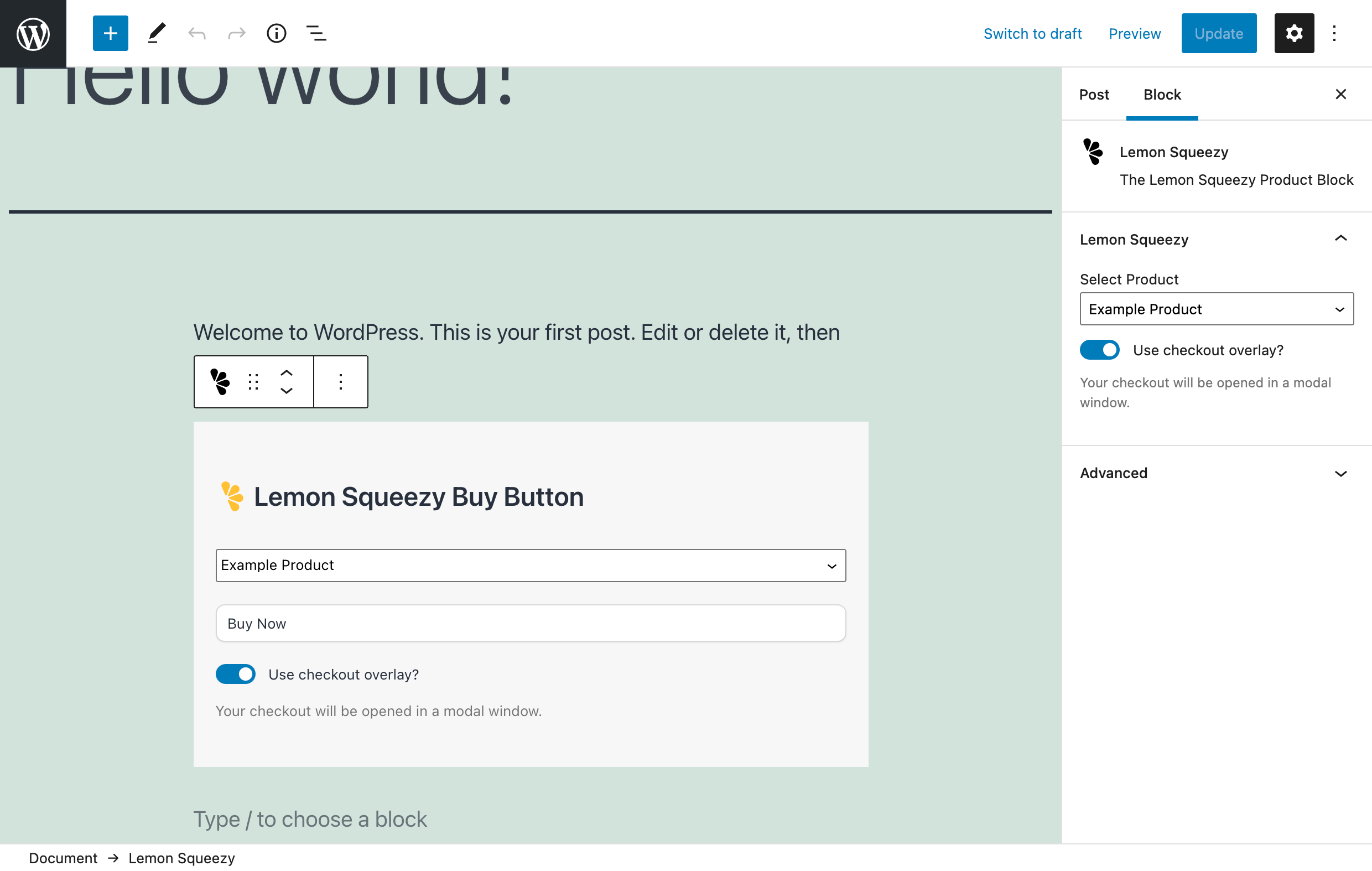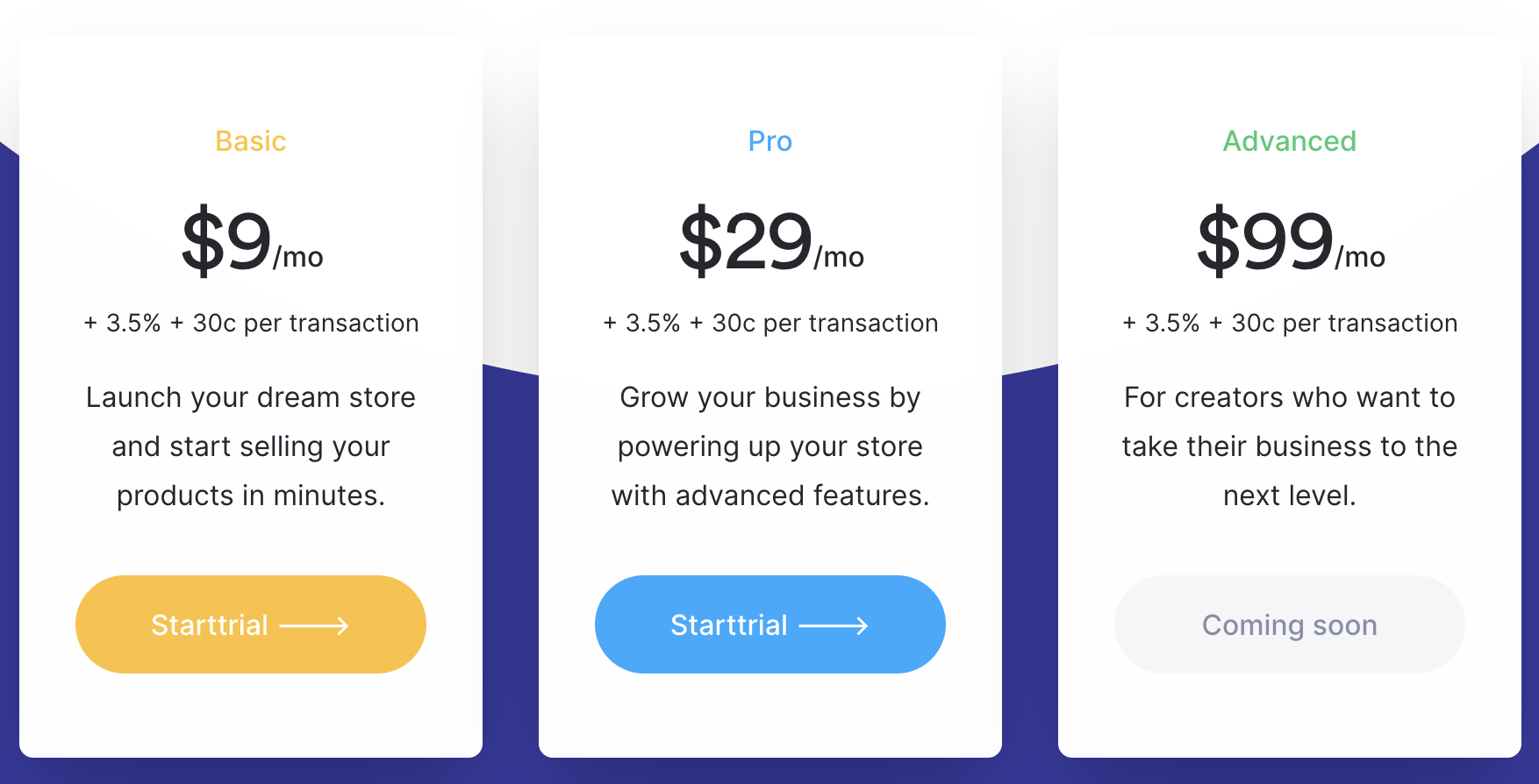Lemon Squeezy, a hosted e-commerce platform for selling digital products, subscriptions, and software licenses, launched a WordPress plugin. The plugin allows the platform’s customers to sell their products directly on WordPress sites.
Merchants sign up, create products, and manage customers and subscribers using the Lemon Squeezy platform. Then they use the plugin to connect via OAuth and display products within WordPress content areas. The first version of the plugin lets users add “buy buttons” for products using a block.


For checkout, merchants can link directly to a secure hosted checkout page or show a checkout pop-up modal on their WordPress sites.
Lemon Squeezy is also aimed at WordPress product creators as the platform includes the ability to ship auto-updates for commercial themes and plugins.
Merchants pay a monthly fee to use the service based on features, plus 3.5% + 30c per transaction. These fees cover access to the hosted platform, which handles merchant accounts, payment gateways, taxes, VAT, and other administrative details as the merchant of record.


Lemon Squeezy was created by veterans of the WordPress community who are looking to position the platform as a competitor to WooCommerce and Easy Digital Downloads. In promoting the new plugin, Lemon Squeezy team member Mike McAlister, founder of Array Themes and creator of Atomic Blocks, explained why he doesn’t see WordPress as the right tool for selling products anymore.
“These days, I can’t imagine running a business inside wp-admin,” McAlister said. “It’s just not built for it, in my opinion. Having sensitive customer records in the same database as site content and data stored by plugins with varying security practices just screams trouble.”
Lemon Squeezy was met with a cautious reception from the WordPress developer community. There was some discussion on it in the Post Status Club Slack instance where members noted that the plugin launched with no migration options. This means it’s currently only available to new store owners or those with a few products they can easily recreate. Without a straightforward migration tool, the service will have a difficult time siphoning users off of existing WordPress-based solutions.
Since the plugin is still in its early days, it seems best-suited to simple stores that don’t require more than just being embedded on a WordPress site. In that case, there are many “buy button” style of e-commerce plugins with lower fees that Lemon Squeezy will be competing against as it enters the market.
Maintaining products on one platform and a store on a different platform may not be advantageous for some users, especially those who don’t want to have to learn both to start selling. Lemon Squeezy’s creators are marketing it as “the easy-peasy way to sell digital products online,” as the hosted service provides an attractive storefront and takes care of all the extraneous financial details of running a store.
Although the plugin’s name is Lemon Squeezy, its title on WordPress.org is “Easy Peasy Digital Downloads — Sell Digital Products, Subscriptions, and Licenses with Lemon Squeezy.” This seems tailored to ride on the coattails of Easy Digital Downloads’ well-established search placement as WordPress’ market leader for selling digital products. WordPress users looking to create a digital store likely would not be searching for this plugin by name unless they already knew about it from elsewhere.
Next on the current roadmap for the Lemon Squeezy WordPress plugin is the ability to restrict content by using more features built into the Lemon Squeezy platform. The plugin is still under development and users are welcome to send feedback to the team via Twitter or email.
Like this:
Like Loading…





